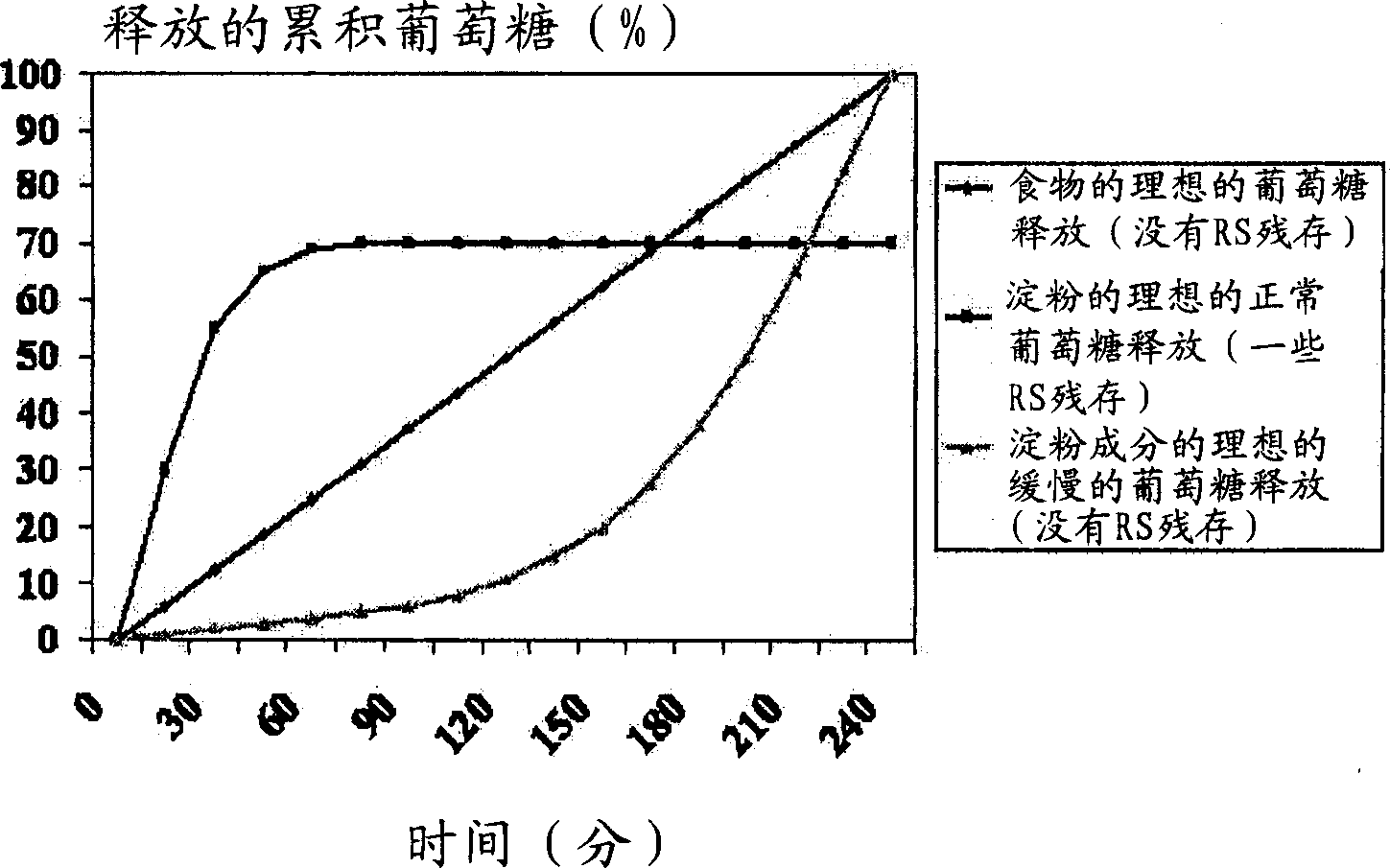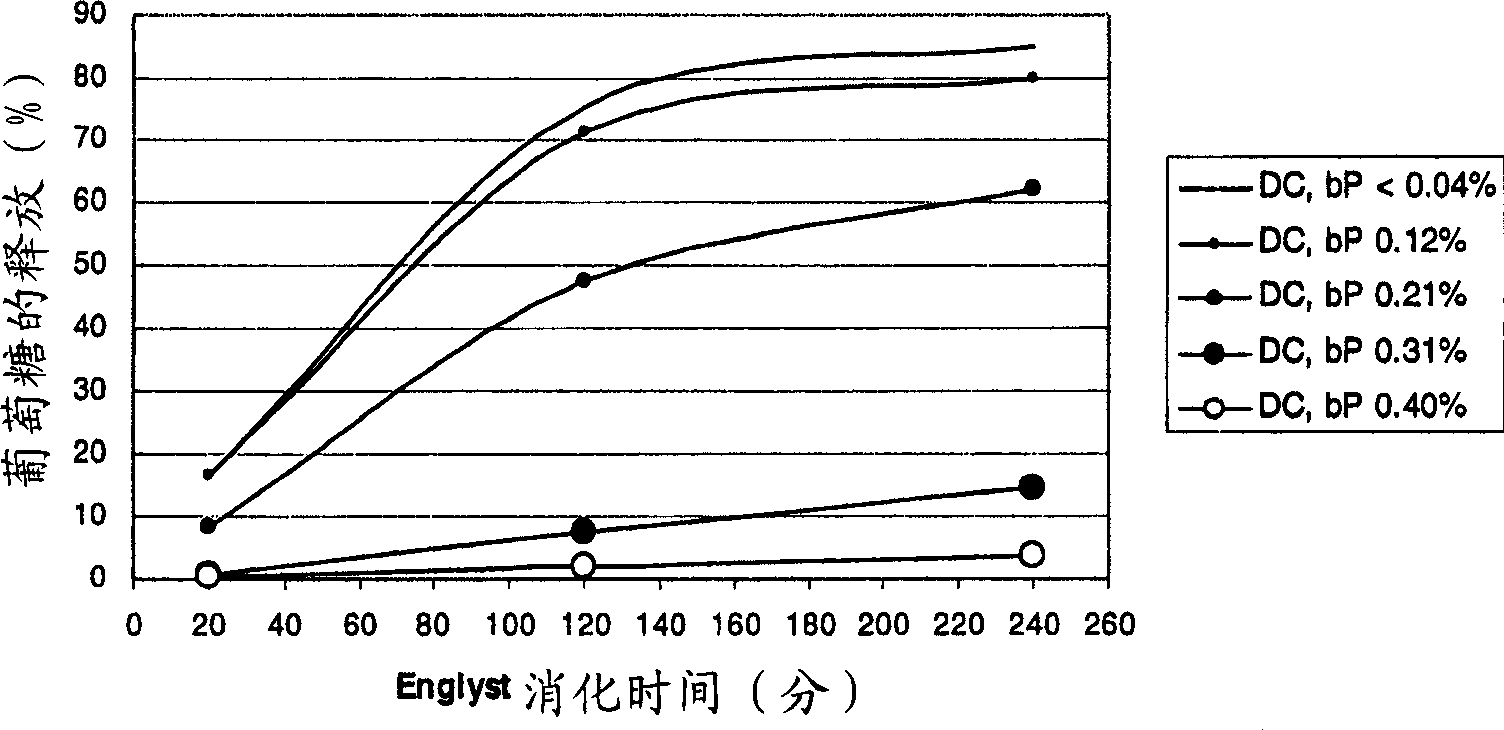Use of a chemically modified starch product
A chemical modification, starch technology, applied in applications, food science, food preparation, etc., can solve problems such as inability to control and maintain weight
- Summary
- Abstract
- Description
- Claims
- Application Information
AI Technical Summary
Problems solved by technology
Method used
Image
Examples
Embodiment 1
[0085] Example 1-Preparation of chemically modified starch
[0086] The following modifications are well known in the art, and the process can be used as a guide for those skilled in the art. The amount of reagent and matrix can be changed to obtain different modification levels.
[0087] a) Modification of propylene oxide-4g of solid sodium hydroxide is dissolved in 750g of tap water at 23°C, and then stirred until completely dissolved. Then add 50g of sodium sulfate to the water and stir until dissolved. Then quickly add tapioca starch to the stirred water mixture and stir until uniform. Various levels of propylene oxide are added to the starch slurry and mixed for 1-2 minutes. The starch slurry was then transferred to a 2L plastic bottle and sealed. The bottle and its contents were then placed in a preheated mixer, set to 40°C, and stirred for 18 hours. After the reaction is completed, adjust the pH of the starch slurry to 3 with dilute sulfuric acid, and then mix for 30 minu...
Embodiment 2
[0091] Example 2-Preparation of cross-linked starch
[0092] Sample 1-control corn starch: Melogel® starch, purchased from National Starch Chemical Company, Bridgewater, New Jersey, USA
[0093] Sample 2—Weigh 3,000 mL of tap water into the reaction vessel. Add 100g Na while stirring 2 SO 4 , And stir until it dissolves. Under good stirring, add 2,000g corn starch, and then dropwise add 3% NaOH needed to reach 40mL alkalinity (44.00mL alkalinity actually requires 667g NaOH) into the starch slurry. The starch slurry was stirred for 1 hour, and then the pH (pH 11.68) was recorded. Adjust the temperature to 42°C, add 160 g of 99 / 1 STMP / STP mixture, and react for 4 hours. Record the final pH and temperature. (PH11.02, 42°C). The pH was adjusted to 5.5 with 3:1 HCl (the pH was adjusted to 5.47 with 164.99 g HCl). The obtained starch cake was filtered and washed twice with 3,000 mL of tap water. The starch cake is crushed and air dried.
[0094] Sample 3—Weigh 3,000 mL of tap water into...
Embodiment 3
[0102] Example 3-Glucose release of chemically modified starch
[0103] The starches of various substrates are modified by PO, OSA, and acetic anhydride reagents, and modified according to the general process described in the above-mentioned embodiments to achieve various modification levels. The digestibility of these starches was tested and the results are shown in Table III below.
[0104] Sample#
[0105]It can be seen from Table III that a variety of starch matrices can be modified by the combination of STMP and STPP to produce the modified digestion curve in the model food system of the present invention.
PUM
 Login to View More
Login to View More Abstract
Description
Claims
Application Information
 Login to View More
Login to View More - R&D
- Intellectual Property
- Life Sciences
- Materials
- Tech Scout
- Unparalleled Data Quality
- Higher Quality Content
- 60% Fewer Hallucinations
Browse by: Latest US Patents, China's latest patents, Technical Efficacy Thesaurus, Application Domain, Technology Topic, Popular Technical Reports.
© 2025 PatSnap. All rights reserved.Legal|Privacy policy|Modern Slavery Act Transparency Statement|Sitemap|About US| Contact US: help@patsnap.com


